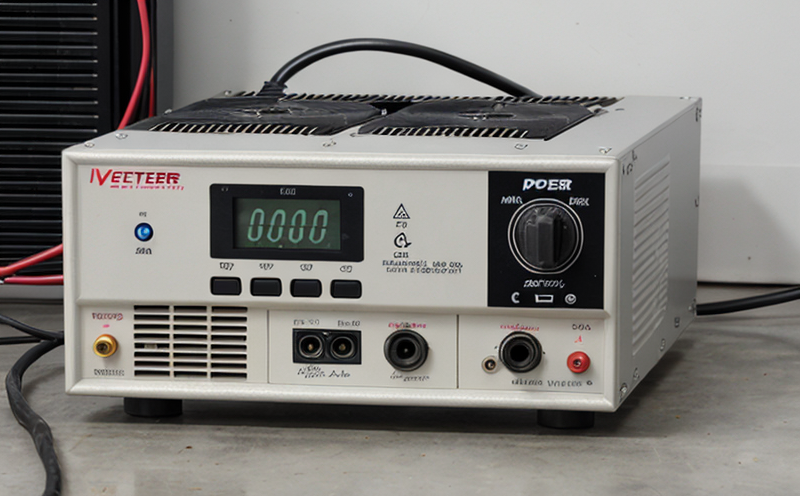IEEE 929 Performance and Safety Testing of PV Inverters
The IEEE Standard IEEE 929-1995 provides a comprehensive framework for the performance and safety testing of photovoltaic (PV) inverters. This standard is widely recognized in the energy sector, particularly for its rigorous approach to ensuring that PV inverters meet critical requirements for grid compatibility, reliability, and safety.
PV inverters are vital components in solar power systems, converting direct current (DC) from solar panels into alternating current (AC) suitable for use by residential or commercial electrical grids. Given the increasing reliance on renewable energy sources, ensuring that these devices operate efficiently and safely is paramount. The IEEE 929 standard addresses key aspects such as electromagnetic compatibility, fault tolerance, and operational parameters.
The testing process outlined in this standard involves a series of stringent checks to ensure that inverters comply with international standards. These tests are designed to evaluate the performance under various operating conditions and stress scenarios, including overvoltage, short circuit, and voltage imbalance situations. Compliance with these tests not only ensures the safety of the equipment but also enhances the overall reliability and longevity of PV systems.
The testing process typically begins with a thorough inspection of the inverter’s design documentation to verify compliance with IEEE 929-1995 requirements. Following this, the actual performance testing is conducted using specialized laboratory-grade equipment. This includes simulating real-world conditions such as varying temperatures and solar irradiance levels to assess how the inverter performs across different environmental factors.
Another critical aspect of the test involves fault tolerance evaluation. The inverter must demonstrate its ability to withstand and recover from various faults, including internal short circuits, overcurrents, and overheating situations. This ensures that even under adverse conditions, the inverter can maintain safe operation without causing damage or hazards.
Post-test analysis is performed using sophisticated software tools to evaluate the performance data collected during testing. This includes detailed reports on efficiency, power factor correction capabilities, harmonic distortion levels, and fault ride-through characteristics. These metrics are crucial for understanding not only the technical specifications of the inverter but also its potential impact on grid stability.
Compliance with IEEE 929-1995 is essential for manufacturers seeking to ensure their products meet stringent quality and safety standards. By adhering to this standard, they can demonstrate that their inverters are robust enough to handle the demands of modern solar power systems while ensuring minimal environmental impact.
For purchasers and installers, compliance with IEEE 929-1995 provides peace of mind knowing that the inverter has undergone rigorous testing. This reduces the risk of equipment failure or safety hazards, ultimately enhancing the reliability and longevity of the entire solar power system.
- Customer Impact: Enhanced confidence in product quality, reduced downtime due to failures, improved grid integration capability.
- Safety Assurance: Reduced risks associated with faulty equipment leading to potential hazards.
- Efficiency Improvement: Optimized energy conversion rates contributing to cost savings and environmental benefits.
Why It Matters
The significance of IEEE 929-1995 cannot be overstated in the context of renewable energy technology. As solar power systems become more prevalent, ensuring that each component operates safely and efficiently is crucial for maintaining grid stability and reliability.
By adhering to this standard, manufacturers can ensure their products are up-to-date with industry best practices. This not only enhances the reputation of the brand but also opens doors to broader market acceptance. Compliance with international standards like IEEE 929-1995 is a key differentiator in competitive markets.
For quality managers and compliance officers, ensuring that their organizations meet these stringent requirements is essential for maintaining regulatory compliance. This helps avoid costly penalties and potential disruptions to business operations.
R&D engineers benefit from detailed insights into the latest testing methodologies and criteria, enabling them to innovate and improve product performance. Their focus on meeting IEEE 929-1995 standards ensures that their innovations are robust, reliable, and safe for real-world applications.
Procurement teams can leverage this standard as a benchmark when selecting suppliers, ensuring they source high-quality inverters that meet the highest safety and performance benchmarks.





